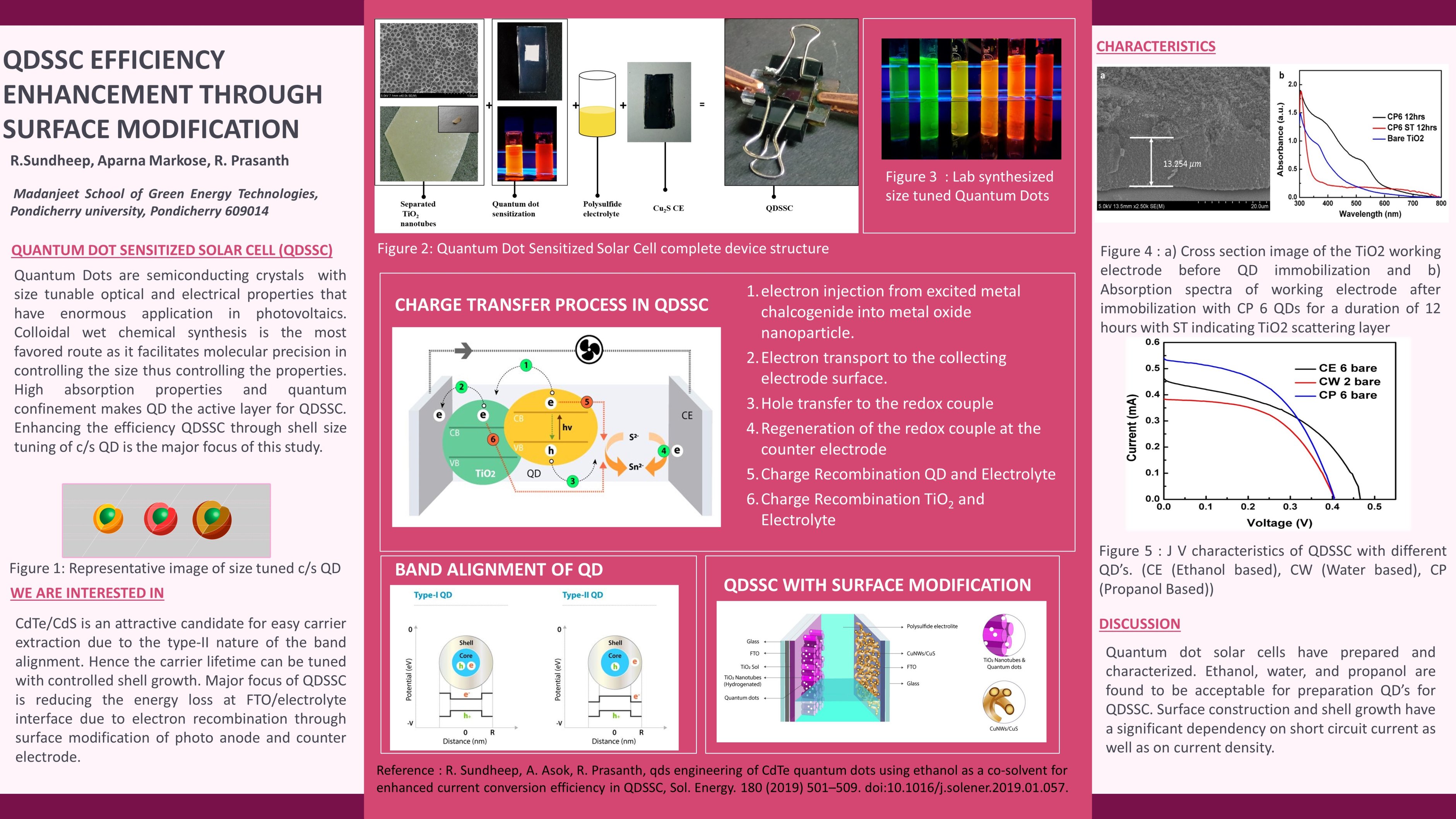QDSSC Efficiency Enhancement through Surface Modification
a Pondicherry University, Kalapet, Pondicherry, India
International Conference on Hybrid and Organic Photovoltaics
Proceedings of Online International Conference on Hybrid and Organic Photovoltaics (OnlineHOPV20)
Proceedings of Online International Conference on Hybrid and Organic Photovoltaics (OnlineHOPV20)
Online, Spain, 2020 May 26th - 29th
Organizers: Tracey Clarke, James Durrant, Annamaria Petrozza and Trystan Watson
Poster, Prasanth Ravindran, 091
Publication date: 22nd May 2020
Publication date: 22nd May 2020
ePoster: 
Advent of wet chemical synthesis of Quantum dots paved the way for cost-effective fabrication of solar cells. However, the efficiency of these solar cells are far below compared to silicon solar cells. The crisis is predominantly due to high surface recombination due to poor surface quality. Here in a simple aqueous synthesis of Cadmium Telluride quantum dots coated with thin Cadmium Sulfate layer in water-ethanol solvent mixture for better surface eminence has been demonstrated. Enhanced solubility of capping agent and slow growth rate of Cadmium Sulfate over Cadmium Telluride taking place in water-ethanol solvent mixture leads to strain free interface construction resulting enhanced current conversion efficiency.
© FUNDACIO DE LA COMUNITAT VALENCIANA SCITO
